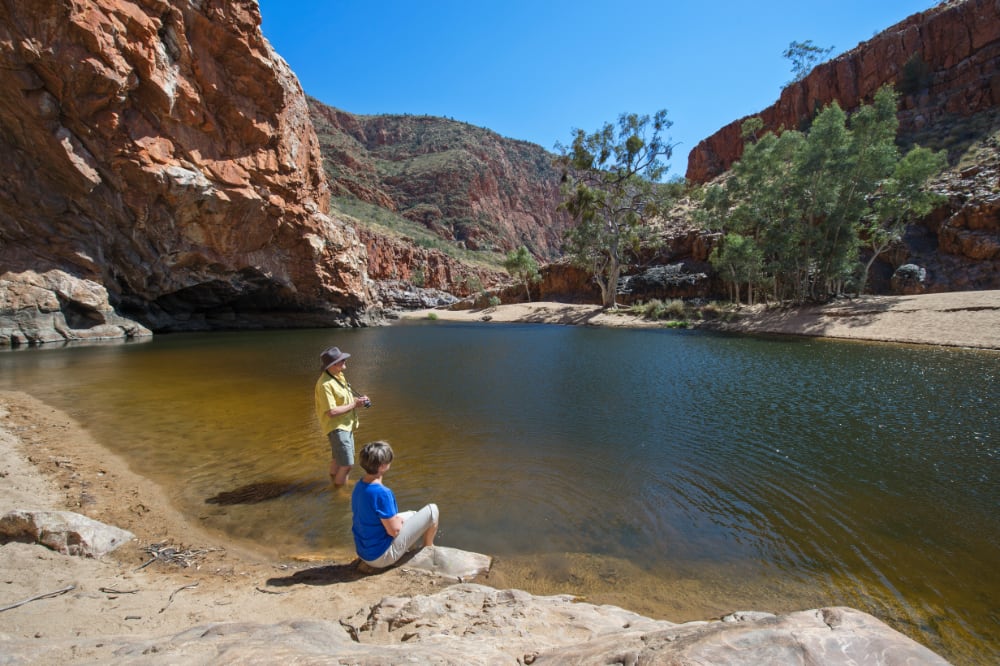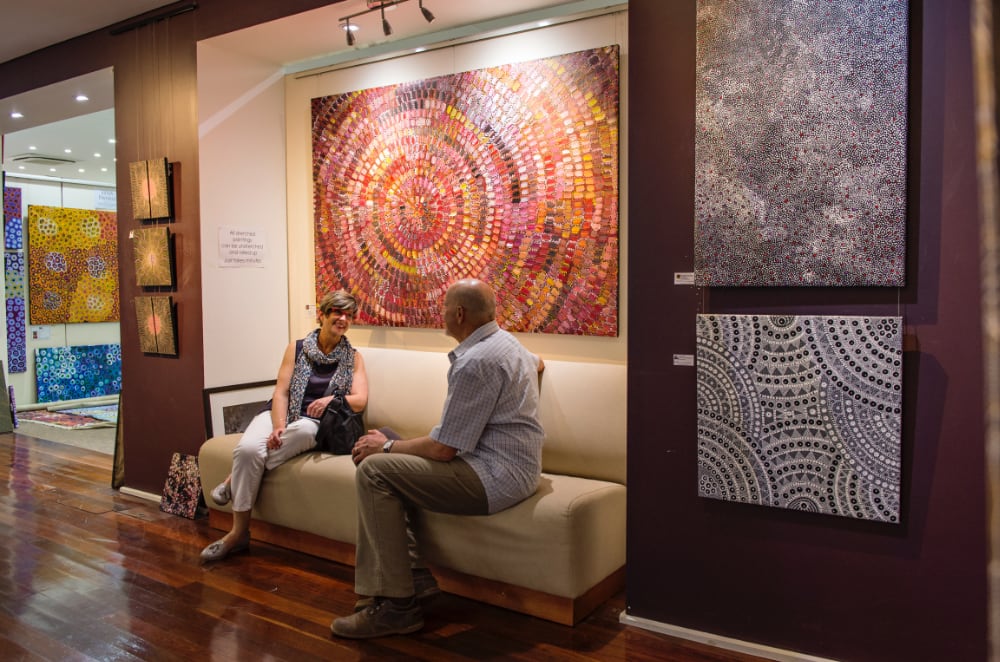Nearby
Lose yourself and find yourself in Australia’s Red Centre, a place rich in Aboriginal culture and rugged outback beauty.
Uluru and Kata Tjuta are just two of Central Australia’s natural and cultural wonders. The whole area is peppered with fascinating stopovers and unexpected landmarks like meteorite craters, salt lakes, waterholes, unique land formations, colourful roadhouses and remote Aboriginal communities
The Red Centre Way
 Ormiston Gorge, West MacDonnell Ranges. Photo: Shaana McNaught / Tourism NT
Ormiston Gorge, West MacDonnell Ranges. Photo: Shaana McNaught / Tourism NT
In Australia’s Red Centre you can sleep under the stars, swim in secluded waterways and discover the spiritual dimensions of Aboriginal art. This region provides the ultimate space to do, feel and learn.
The Red Centre Way is a 1135 km driving loop starting and finishing in Alice Springs.
It includes stops at the West MacDonnell Ranges, Rainbow Valley, Palm Valley, various meteorite crash sites and a number of quintessential roadhouses on the Stuart Highway, most of which offer accommodation, meals, fuel and Aboriginal art.
Kings Canyon and Watarrka National Park are absolute highlights. You can trek to the top of the canyon for unforgettable views, stroll along the creek for a picnic in the shade or just sit back and watch the canyon change colours as the sun sets.
Visiting Aboriginal communities
There are a number of remote Aboriginal communities within a few hours’ drive of Uluru-Kata Tjuta National Park, including Docker River (Kaltukatjara), Amata and Hermannsburg.
Visiting an Aboriginal community provides a rare insight into the way the world’s oldest culture operates in the 21st century. Some communities also boast vibrant art centres where visitors can purchase world-class artwork at bargain prices (while supporting the local community).
Central Land Council permits are required to access most remote Aboriginal communities in the Northern Territory. Alcohol is prohibited or restricted in these communities.
Please be aware that, just like the residents of Mutitjulu community in the park, many Aboriginal people living in remote communities do not speak English as a first language. There are also a number of cultural differences to keep in mind.
Roadhouses
 Curtin Springs. Photo: Sarena Hyland / Tourism NT
Curtin Springs. Photo: Sarena Hyland / Tourism NT
Quirky and unique, a visit to a classic outback roadhouse is a must-do in Central Australia.
Roadhouses along the Stuart and Lasseter Highways vary greatly in size and style, but always offer accommodation, powered campsites, hot meals, refreshments, petrol and a quintessential Territorian experience.
The nearest roadhouse to Uluru-Kata Tjuta National Park is Curtin Springs, located approximately 100 km from Yulara.
An active cattle station, Curtin Springs runs tours to nearby Mount Connor. This flat-topped sandstone monolith is known as Atila to Anangu, while many locals call it Fooluru because of its resemblance to Uluru, which tricks many first-time visitors driving from Alice Springs.
 Mount Conner. Photo: Curtin Springs Station / Tourism NT
Mount Conner. Photo: Curtin Springs Station / Tourism NT
Alice Springs
 Mbuanta Fine Art Gallery, Alice Springs. Photo: Shaana McNaught / Tourism NT
Mbuanta Fine Art Gallery, Alice Springs. Photo: Shaana McNaught / Tourism NT
The unofficial capital of Central Australia, ‘the Alice’ has plenty to offer travellers.
It’s a great place to dip into Aboriginal culture, and the town’s numerous galleries exhibit outstanding work from prominent and emerging Indigenous artists.
There’s a lot of history on display too, including the Museum of Central Australia, the fascinating old telegraph station and the museum at the Royal Flying Doctor Service. You can also cuddle a joey at the Kangaroo Sanctuary or get close and personal with lizards and snakes at the Reptile Centre.
